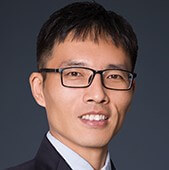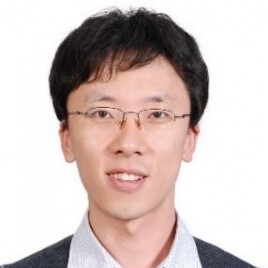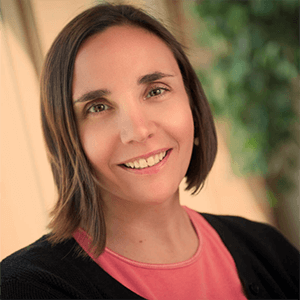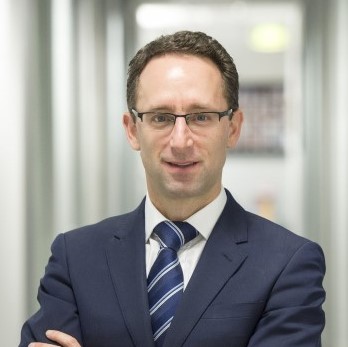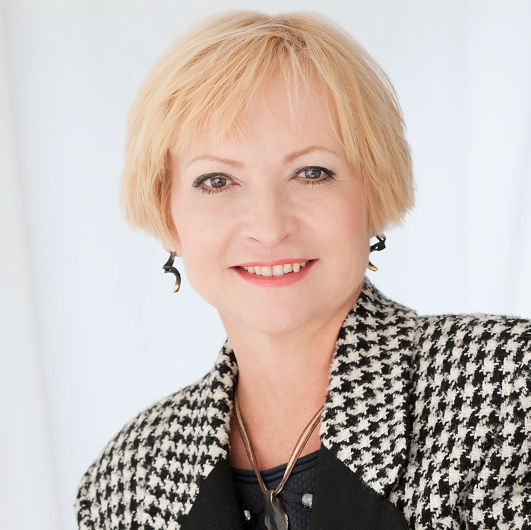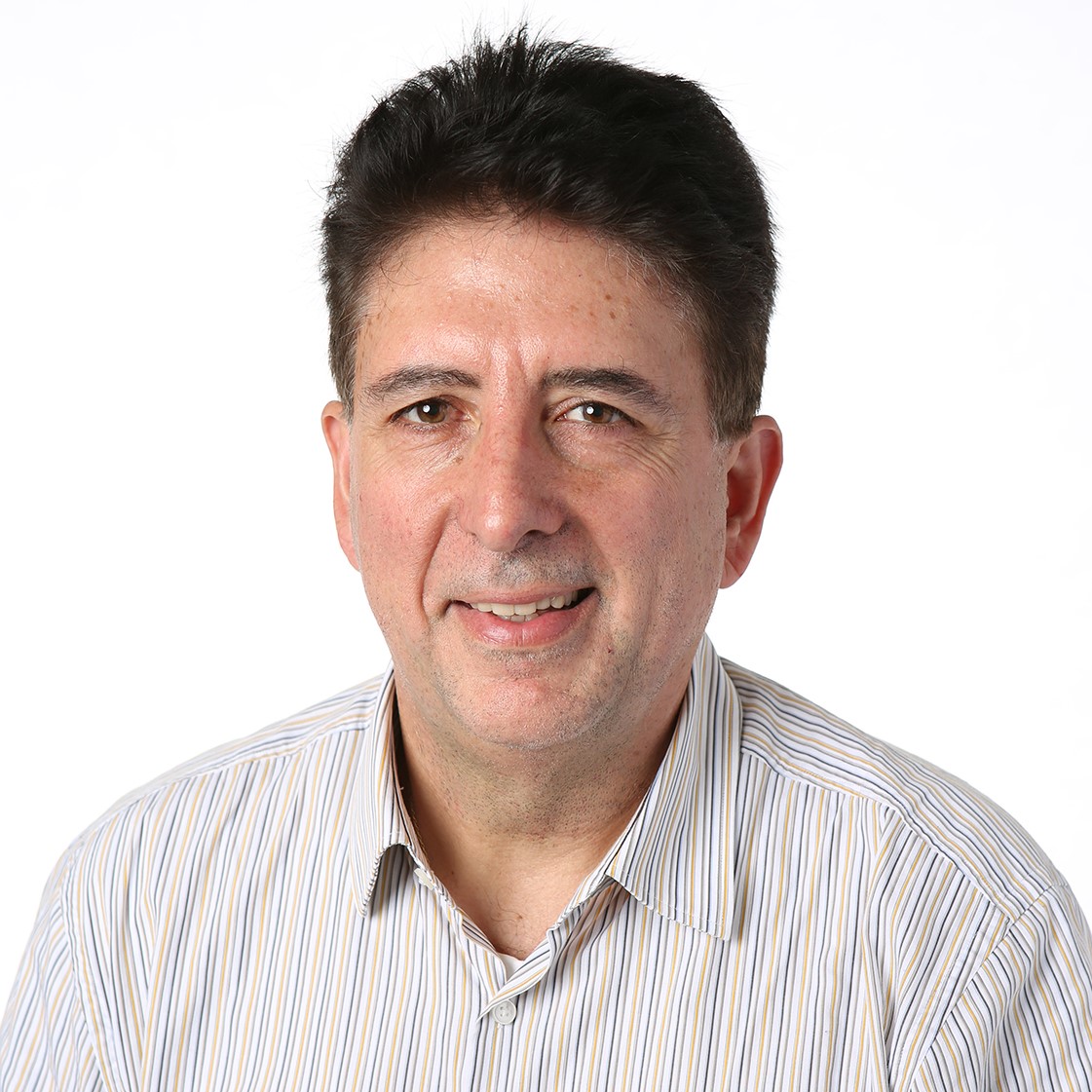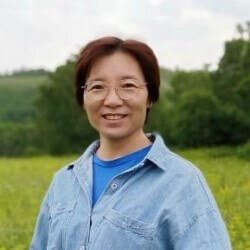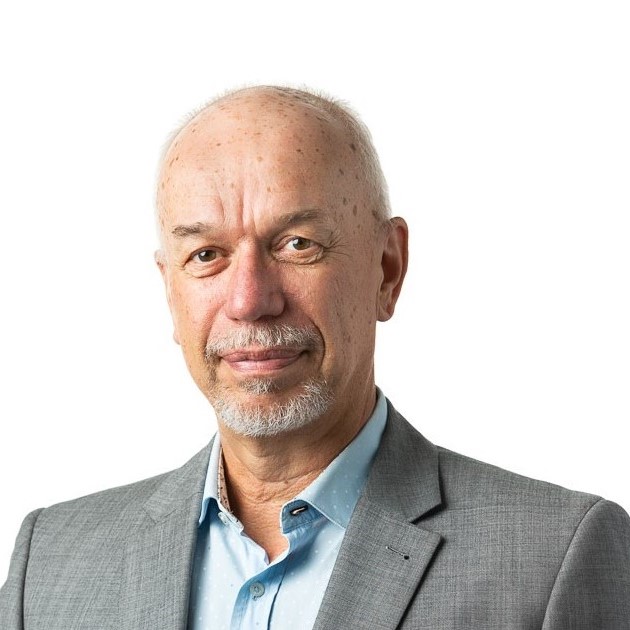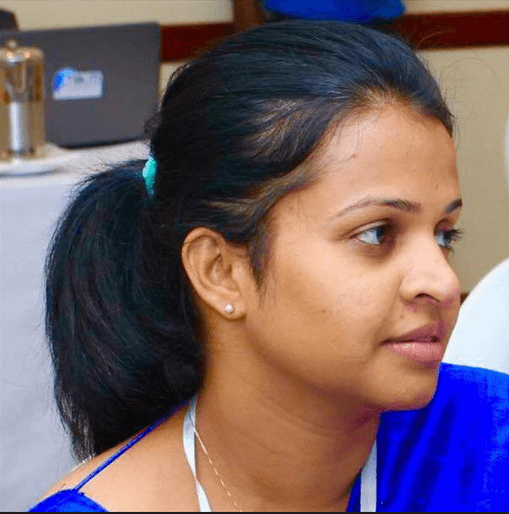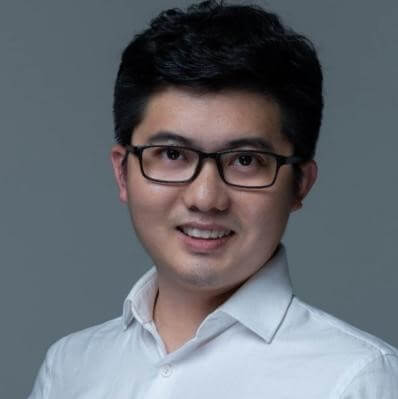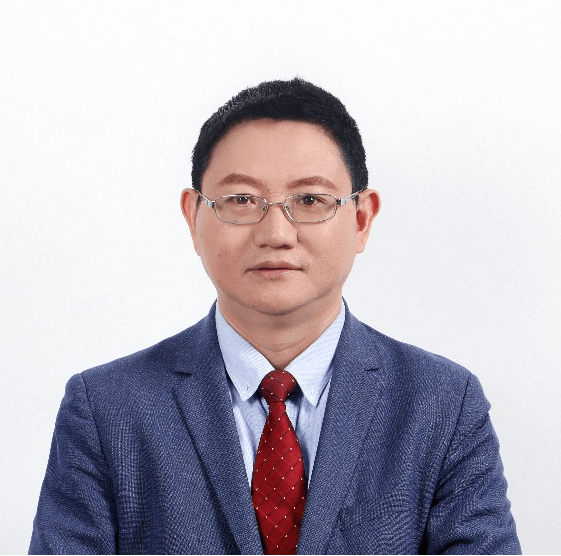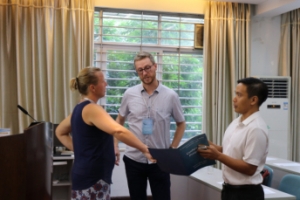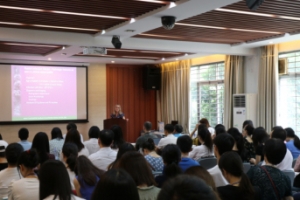 https://www.asiapacificbiofilms.org/2022/wp-content/uploads/2021/12/2021-压缩-scaled.jpg
1578
2560
boge
https://www.asiapacificbiofilms.org/2022/wp-content/uploads/2021/03/logo1-4.png
boge2021-12-06 14:30:382021-12-07 03:07:203rd International Conference on Biofilms (Asia-Pacific 2021) was held ONLINE!
https://www.asiapacificbiofilms.org/2022/wp-content/uploads/2021/12/2021-压缩-scaled.jpg
1578
2560
boge
https://www.asiapacificbiofilms.org/2022/wp-content/uploads/2021/03/logo1-4.png
boge2021-12-06 14:30:382021-12-07 03:07:203rd International Conference on Biofilms (Asia-Pacific 2021) was held ONLINE!https://live.polyv.cn/watch/3430023 (Venue1)
ORGANIZATION
Organizers
South China University of Technology 
South China University of Technology (SCUT) is a leading educational institution in China, a public research-intensive university that is directly governed by the Chinese Ministry of Education. Located in the city of Guangzhou, a thriving metropolis in South China, it today covers a total area of 405 hectares, consisting of three campuses: the Wushan Campus, the University Town Campus, and the Guangzhou International Campus. The university was formerly known as the South China Institute of Technology, which was first founded in 1952 by merging the engineering schools and departments of a number of major universities and polytechnic universities from five provinces in central and Southern China. After over 60 years of development, SCUT has become a multi-disciplinary university, merging science, engineering, business management, arts and social science, medicine and other disciplines into one integration. Since its founding, it has educated over 380,000 graduates at all levels. In 2016, SCUT was ranked the world’s top 300 universities by the Academic Ranking of World Universities, with its engineering placed at the 22nd place. According to Thomson Reuters’ Essential Science Indicators, SCUT has chemistry, materials science, engineering, agricultural science, physics, biology and biochemistry, computer science, and environment and ecology ranked in the global top 1%. SCUT has established connections and partnerships with over 50 overseas universities to promote student training and scientific research. Considering the importance of people as the fundamental element of education, the university always sees “the academy as the foundation, talented ones as the strength, open minds as the vitality, and the culture of the university as the energy to thrive and last”. All these efforts are building SCUT as a top-ranking university in the country and a renowned world-class institution.
The School of Food Science and Engineering (SFSE)was established newly in November 2015 through the reorganization of the School of Light Industry and Food Science, however, its history can be dated back to 1952, the beginning of the University. The first degree program of the School, Sugar and Food Engineering, was started to run at that time. Currently, the school has two undergraduate programs as well as Food Science and Engineering, and Food Quality and Safety, and two postdoctoral programs, Food Science and Engineering and Light Industrial Technology and Engineering. A national evaluation of key discipline carried out in 2012 showed that the Food Science and Engineering in the School were ranking No.3 among Chinese universities.
The school of Food Science and Engineering is one of the most important units in the University featuring high level innovative scientific research. The School has a national engineering research center (Wheat and Corn Processing Lab), a national innovation and technology platform (Starch and Plant Proteins Research Center) and several provincial/ministry scientific research institutes, such as Guangdong Key Laboratory for Green Processing and Safety of Natural Products, Guangdong Technical Center for Food Processing and Nutrition, Guangdong Lipid Science and Applied Technology Center, Guangdong International Collaborate Center for Sugar Green Processing, etc.
The School takes the student education as the primary task and provides perfect environment for personal development of every student. Now, in total of 1234 students, including 521 undergraduates and 713 graduates are studying in the school. The School has extensive communication and cooperation with many top-level oversea universities and research institutes such as Cornel University, Queensland University, Rutgers University and Kyoto University. Nearly one hundred scientists, faculties and students were actively involved in the international communication and cooperation through lecture, seminar, conference, or being visiting scholars and exchange students.
Southern University of Science and Technology 
Southern University of Science and Technology (SUSTech) is a research-oriented public university founded in Shenzhen, China’s innovation center.
From their inception, SUSTech has attached enormous importance to attracting high-quality talents to its faculty. Through our continuing efforts to introduce world-class educators, SUSTech is proud to have over 800 faculty members on staff, and they continue to expand its faculty with amazing talent from all over the world. Many of their faculty have been honored with selection into national or regional talent programs, and SUSTech is keen to nurture and cultivate its talented staff.
SUSTech is proud of its unique dual-advisor system, which ensures that our students have every aspect of their lives are cultivated to maximize their university experiences. They believe that it is important that students are able to develop their personalities and be nurtured as potential future leaders with a global outlook.
SUSTech has learned from world-class research institutions spanning the globe and has planned its academic disciplines based on the major needs and strategic industries emerging around the Pearl River Delta region. With a major focus on science and engineering, SUSTech still has substantial research focuses in medicine, humanities and social services, to maximize the potential for new ideas across disciplines for new knowledge, new technologies and social development.
As SUSTech adapts and embraces the new challenges, the university continues to expand its academic opportunities for future leaders. With a strong emphasis on research, the growth in research centers and key laboratories will provide opportunities for interdisciplinary research.
The SUSTech campus sits in the rolling hills of Nanshan District in the bustling city of Shenzhen, with the verdant green lawns reflecting the environmentally friendly policies of the university. The natural and tranquil environment combines perfectly with the modern style of Shenzhen and its convenient location. With the campus covering an area of nearly 2 square kilometers, there is plenty of room for students to cogitate and consider their research or relax and enjoy their lives on campus. With students transiting the campus on foot, by bike or utilizing our convenient electric shuttle buses, our commitment to environmental sustainability is strong. By placing ourselves among glorious greenery, we can partake in and protect the gorgeous flora and fauna that naturally occurs in Guangdong Province.
Co-Organizers
Academic Exchange Information Center 
Academic Exchange Information Center (AEIC) is a well-developed international exchange platform co-founded by colleges, scientific research institutions and enterprises. We concentrate on global professional academic forces and devotes to the academic exchange activities such as scientific and technological information dissemination, scholars scientific research exchanges and social hotspots analysis. Now we have received big support from many colleges and research institutes. Adhering to the spirit of Professional, Focus and Concentrate, we provide an international professional exchange platform for scientific and technological academic communication to realize the transformation of academic achievements.
AEIC cooperates with many international press including Springer, Elsevier, IEEE, Taylor & Francis Group,IOP, EDP, ASME, SPIE, Academic Press, American Scientific Publishing, DEStech Publications, TTP and Atlantis Press. AEIC calls for papers from academic conferences and publishs papers for EI or CPCI index. Outstanding papers will be recommended for publication in well-known international journals such as the ones indexed by SCI, EI, etc. Conferences of all disciplines:
| Computer Science | Water Science and Technology | Traffic and Transportation | Economic Finance |
| Material Science | Environmental Science and Technology | Food Science | Psychology |
| Mine Engineering | Chemistry and Chemistry | Social Sciences | Energy Science |
| Civil Engineering | Agroforestry Science and Technology | Art and Sports | Other disciplines |
Supporting parties
ESCMID Study Group for Biofilms
ESCMID Study Group for Biofilms (ESGB). Biofilms are communities of microorganisms that are attached to each other and/or a biotic or abiotic surface, are embedded in a self-produced extracellular matrix, and show markedly reduced susceptibility to antimicrobial agents. It is estimated that the majority of chronic infections and most device-related infections are biofilm-associated. However, biofilm infections are difficult to diagnose and extremely difficult to treat.
The objective of ESGB is to increase knowledge on various aspects of microbial biofilms with as ultimate goals improved diagnostic tools for biofilm infections, and better approaches to prevent and treat such infections. In order to obtain these goals, a multidisciplinary approach is necessary and one of the objectives of the ESGB to facilitate cooperation between scientist working on biofilms in different disciplines.
Chinese Society for Microbiology
The Chinese Society for Microbiology (CSM), founded in 1952, is a national non-profit, legal academic organization of the Chinese scientists specializing in microbiology. Since 1980, CSM has become a member of International Union of Microbiological Societies (IUMS). CSM currently consists of 6 working committees and 22 professional committees and more than 20,000 members in China. CSM is affiliated to China Association of Science and Technology (CAST), and also accepts administrative supervision from Ministry of Civil Affairs. The highest authority of CSM is the Representative Congress, which is usually held in every five years. The Representative Congress is authorized to select the Council, that elects the President, Vice Presidents, Secretary General and General Council of CSM. The current Council of CSM is the twelfth,which was elected in October 2021, with Xu Jianguo as the President and Xiang Hua as the Secretary General. The Council consists of 154 members, in which 42 are executive directors.
Overseas Chinese Society for Microbiology 
Overseas Chinese Society for Microbiology (Sino-Micro) is a registered non-for-profit organization formed by overseas Chinese researchers who study microbiology. Our goal is to establish a social network that will facilitate the advancement of our research programs and the development of our careers. In addition, we wish to work as a group to create a platform for enhancing scientific interactions with our colleagues in China. Current Sino-Micro members are primarily principal investigators in the USA. However, our organization is open to all overseas Chinese microbiologists.
Microbiology Australia 
The journal of the Australian Society for Microbiology
Microbiology Australia, The journal of the Australian Society for Microbiology is produced online and in print four times a year. The journal contains scientific papers, technical notes, book reviews, conference information, data on new products and services in microbiology, and material for tertiary students, in addition to providing detail on ASM activities. Microbiology Australia comprises mostly thematic issues focused on the areas of greatest importance to microbiology. Themes are determined by the Editorial Board and Guest Editor(s), with the exception of a biennial issue that features Breaking Research of ASM’s Early Career Researchers.
ELSEVIER
Elsevier as a global leader in information and analytics, Elsevier helps researchers and healthcare professionals advance science and improve health outcomes for the benefit of society. We do this by facilitating insights and critical decision-making for customers across the global research and health ecosystems. In everything we publish, we uphold the highest standards of quality and integrity at scale to ensure value to our customers. We bring that same rigor to our analytical solutions for researchers, health professionals, institutions and funders.
Committee
Founder and Honorable President

Dr. Mark Shirtliff (1969–2018)
Dr. Shirtliff has specialized in both in vitro and in vivo systems for the study of biofilms as a microbiologist for over 25 years. As an indication of his expertise on the subjects of biofilm-forming microbes and their relation to infectious disease and pathogenesis, he has presented his scientific findings on the subject at 110 meetings and symposia and have orally presented at over 100 national and international meetings/seminars. He has also authored over 120 peer-reviewed scientific papers and book chapters on pathogenic microbes, both their biofilm mode of growth and the chronic diseases that they cause. Dr. Shirtliff has a strong background in organizing highly skilled colleagues in multidisciplinary research. He also has a strong working knowledge of budget development and have obtained over $8 million from state, national (NIH and DOD), and international funding agencies in the past 10 years. He has served on 35 graduate committees and was the primary advisor on 11 graduate students committees (8 PhD, 3 Masters).
Organizing Committee Members
Birthe Kjellerup
University of Maryland
Chuanwu Xi
University of Michigan
Gamini Seneviratne
National Institute of Fundamental Studies
Janette Harro
University of Maryland
Kendra Rumbaugh
Texas Tech University
Liang Yang
Southern University of Science and Technology
Matthew Parsek
University of Washington
Nathan Archer
Johns Hopkins University
Yue Qu
Monash University
Zhenbo Xu
South China University of Technology
Guanglei Qiu
South China University of Technology
Wei Hu
Shandong University
Yulong Tan
Qingdao Agricultural University
Haiyan Hu
Sun Yat-Sen University
SPEAKERS
Keynote Speakers
Aijie Wang
Harbin Institute of Technology
April Gu
Cornell University
Bin Cao
Nanyang Technological University
Birthe Kjellerup
University of Maryland
Chii-Wann Lin
National Taiwan University
Daniel Wozniak
The Ohio State University
Darla Goeres
Montana State University
Dinh-Toi Chu
Vietnam National University
Gamini Seneviratne
National Institute of Fundamental Studies
Gordon Ramage
University of Glasgow
Kendra Rumbaugh
Texas Tech University
Kimberly Kline
University of Geneva
Liang Yang
Southern University of Science and Technology
Lichuan Gu
Shandong University
Luyan Ma
The Institute of Microbiology of the Chinese Academy of Sciences
Manuel Simões
University of Porto
Mark Wilcox
The University of New South Wales
Matthew Parsek
University of Washington
Paul Stoodley
The Ohio State University
Per Halkjær Nielsen
Aalborg University
Peter Kingshott
Swinburne University of Technology
Po-Ren Hsueh
National Taiwan University Hospital
Romain Briandet
University of Paris-Saclay
Shezmin Ismail
Trajan Medical and Scientific
Shuhong Gao
Harbin Institute of Technology
Stefan Wuertz
Nanyang Technological University
Steve Flint
Massey University
Tom Coenye
Ghent University
Ute Römling
Karolinska Institute
Xiaoxue Wang
South China Sea Institute of Oceanology
Xuesong He
Dental Medicine of Harvard University
Yilin Wu
Chinese University of Hong Kong
Invited speakers
Aiqun Jia
Hainan University
Albert Parker
Montana State University
Amila P. Henagamage
Uva Wellassa University
Anahit Penesyan
Macquarie University
Anne Mai-Prochnow
Sydney University
Anton Peleg
Monash University
Boce Zhang
University of Florida
Celia Mayer
University of Santiago de Compostela
Chao Lu
Jinan University
Cheng Li
Massachusetts Institute of Technology
Chunlei Shi
Shanghai Jiaotong University
Clarissa Nobile
University of California
Cormac Murphy
University College Dublin
Cuijie Feng
Sun Yat-sen University
Danny Ducat
Michigan State University
Darshani Singhalage
Uva Wellassa University
David McGiffin
Monash University
Diane McDougald
University of Technology Sydney
Efstathios Giaouris
University of the Aegean
Elena Ivanova
Royal Melbourne Institute of Technology
Enrico Marsili
University of Nottingham
Faqian Sun
Zhejiang Normal University
Feng Ju
Westlake University
Haiyan Hu
Sun Yat-Sen University
Heema Vyas
The University of Sydney
Helmut Thissen
Commonwealth Scientific and Industrial Research Organisation
Hiroshi Hamamoto
Teikyo University
Honghua Hu
Macquarie university
Hongman Hou
the College of Food Science and Technology
Iqbal Ahmad
Aligarh Muslim University
Janette Harro
University of Maryland
Jianxiong Hao
Hebei University of Science and Technology
Jianyu Su
South China University of Technology
Jim Manos
University of Sydney
Jing Lin
Guangzhou University
Jingyu Chen
China Agricultural University
Jinxin Zheng
Shenzhen Nanshan Hospital
Junyan Liu
Zhongkai University of Agriculture and Engineering
Ke Wang
First Affiliated Hospital of Guangxi Medical University
Kelli Buckingham-Meyer
Montana State University
Lei Cheng
Sichuan University
Lei Yuan
Yangzhou University
Madushika Perera
University of Colombo
Mahesh Premarathna
National Institute of Fundamental Studies
Mariagrazia Di Luca
University of Pisa
Mingming Guo
Zhejiang University
Moutong Chen
Guangdong Academy of Sciences
Na Guo
Jilin University
Nathan Archer
Johns Hopkins University
Pinghua Sun
Jinan University
Qingbin Guo
Tianjin University of Science and Technology
Qingjun Wei
Guangxi Medical University
Qingli Dong
University of Shanghai for Science and Technology
Radha Prasanna
ICAR-Indian Agricultural Research Institute
Renyou Gan
Singapore Institute of Food and Biotechnology Innovation
Rihua Xu
Inner Mongolia University
Rongchang Wang
Tongji University
Ruth Thornton
University of Western Australia
Sandra Pinto
University of Lisbon
Scott Rice
Commonwealth Scientific and Industrial Research Organisation
Shanquan Wang
Sun Yat sen University
Sidath Ekanayake
National Institute of Fundamental Studies
Stuart Dashper
Melbourne University
Taghrid Istivan
Royal Melbourne Institute of Technology
Thilini A. Perera
University of Colombo, Colombo
Viduranga Waisundara
Australian College of Business & Technology
Weihui Wu
Nankai University
Wenwei Lu
Jiangnan University
Xiangjun Gong
South China University of Technology
Xiaomei Bie
Nanjing Agricultural University
Xin Wang
Northwest Agriculture and Forestry University
Xuejie Li
South China University of Technology
Yichao Wu
Huazhong Agricultural University
Yong Zhao
Shanghai Ocean University
Yu Tao
Harbin Institute of Technology
Yuan Ren
South China University of Technology
Yuanyuan Huang
Shenzhen Institutes of Advanced Technology
Yue Qu
Monash University
Yulong Tan
Qingdao Agricultural University
Zhenbo Xu
South China University of Technology
Zlatko Kopecki
University of South Australia
Zunying Liu
Ocean University of China
PROGRAM
Registration and Meeting platform test
Animal Models in Biofilm Research
8:00-9:30
Modeling biofilm-associated wound infections
Kendra Rumbaugh (Texas Tech University, Lubbock)
Animal models of orthopedic infection
Janette Harro (University of Maryland, Baltimore)
9:30-10:00
Meet the speakers / Coffee break
Control strategies for bacterial biofilms – the need for standard methods?
10:00-11:30
Why the need for standard methods?
Paul Stoodley (The Ohio State University, Columbus)
Standardized Biofilm Methods
Kelli Buckingham-Meyer (Montana State University, Bozeman)
Statistical considerations in image analysis
Albert Parker (Montana State University, Bozeman)
11:30-15:00
Meet the speakers 11:30-11:45 / Lunch 11:45-14:00
Construction of microbial biofilms and detection- How to do it in a correct way?
15:00-16:00 Yulong Tan (Qingdao Agricultural University, Qingdao)
Zhenbo Xu (South China University of Technology, Guangzhou)
Renyou Gan (Singapore Institute of Food and Biotechnology Innovation, Singapore)
Junyan Liu (Zhongkai University of Agriculture and Engineering, Guangzhou)
Xuejie Li (South China University of Technology, Guangzhou)
16:00-16:30
Meet the speakers / Coffee break
Biofilms mediated infection- Difference between in vitro and in vivo
16:30-17:30 Yulong Tan (Qingdao Agricultural University, Qingdao)
Ke Wang (First Affiliated Hospital of Guangxi Medical University, Nanning)
Renyou Gan (Singapore Institute of Food and Biotechnology Innovation, Singapore)
Yao Sun (First Affiliated Hospital of Wenzhou Medical University, Wenzhou)
Yu Li (Qiqihar Medical University, Qiqihar)
17:30-19:00
Meet the speakers 17:30-17:45 / Dinner & Networking 17:45-19:00
Getting your article published in Biofilm
19:00-20:30 Tom Coenye (Ghent University, Ghent)
Birthe Kjellerup (University of Maryland, College Park)
20:30-20:45
Meet the speakers
Session 1
Chair: Chuanwu Xi, University of Michigan, Ann Arbor
Zhenbo Xu, South China University of Technology, Guangzhou
9:00-9:10
Opening ceremony
Birthe Kjellerup (University of Maryland, College Park)
9:10-9:40
Free-floating biofilm-like aggregates: expanding the biofilm conceptual developmental model
Paul Stoodley (The Ohio State University, Columbus)
9:40-10:10
Understanding biofilms in wounds
Kendra Rumbaugh (Texas Tech University, Lubbock)
10:10-10:25
Modeling polymicrobial infection in the CF-like airway of Scnn1 transgenic mice
Janette Harro (University of Maryland, Baltimore)
10:25-10:40
Immunity to S. aureus skin infections
Nathan Archer (Johns Hopkins University, Baltimore)
10:40-10:55 Meet the speakers / Coffe break
Session 2
Chair: Liang Yang, Southern University of Science and Technology, Shenzhen
Guanglei Qiu, South China University of Technology, Guangzhou
10:55-11:25
To be determined
Daniel Wozniak (The Ohio State University, Columbus)
11:25-11:55
New insight into the biofilm matrix of P. aeruginosa
Matthew Parsek (University of Washington, Seattle)
11:55-12:10
Candida biofilms: importance, regulation, and evolution
Clarissa Nobile (University of California, Merced)
12:10-12:25
Lysocin E - a novel antibiotic potentiated in the host
Hiroshi Hamamoto (The University of Tokyo, Bunkyoku)
12:25-14:00
Meet the speakers 12:25-12:40 / Lunch 12:40-14:00
Session 3
Chair: Wei Hu, Shandong University, Jinan
Yulong Tan, Qingdao Agricultural University, Qingdao
14:00-14:30
Reduced antimicrobial susceptibility in microbial biofilms: where are we and where should we be going?
Tom Coenye (Ghent University, Ghent)
14:30-15:00
The clinical importance of interkingdom biofilms in the oral cavity and beyond
Gordon Ramage (University of Glasgow, Glasgow)
15:00-15:30
Bacterial second messenger cyclic-di-GMP and its regulation and inhibition in Pseudomonas aeruginosa
Luyan Ma (The Institute of Microbiology of the Chinese Academy of Sciences, Beijing)
15:30-15:45
Quorum sensing as a target for controlling biofilm formation in Acinetobacter baumannii
Celia Mayer (University of Santiago de Compostela, Galicia)
15:45-16:00
Meet the speakers / Coffee break
Session 4
Chair: Yue Qu, Monash University, Melbourne
Junyan Liu, Zhongkai University of Agriculture and Engineering, Guangzhou
16:00-16:30
Regulation of biofilm formation by cyclic di-GMP signaling
Ute Römling (Karolinska Institute, Stockholm)
16:30-17:00
Pathogenesis of polymicrobial biofilm-associated infections
Kimberly Kline (University of Geneva, Geneva)
17:00-17:30
To be determined
Po-Ren Hsueh (National Taiwan University Hospital, Taipei)
17:30-17:45
Spatial transcriptome uncovers rich coordination of metabolism in bacterial community
Jintao Liu (Tsinghua University, Beijing)
17:45-18:00
Engineered polyurea (PURE) dendrimers are a potential alternative to conventional antibiotics
Sandra Pinto (University of Lisbon, Lisbon)
18:00-18:15
Evolution of biofilm cells in response to antibiotics showcases the role of biofilms as diversity incubators for the microbial world
Anahit Penesyan (Macquarie University, Sydney)
18:15-20:00
Meet the speakers 18:15-18:30 / Dinner & Networking 18:30-20:00
Session 1 Biomaterial and microorganism interface
Chair: Helmut Thissen, CSIRO, Canberra
7:55-8:00
Opening: Welcome to the Australian Biofilms meeting
Yue Qu (Monash University, Melbourne)
8:00-8:40
Colloidal crystal based micro- and nanostructured surfaces to control bacterial colonization
Peter Kingshott (Swinburne University of Technology, Melbourne)
8:40-9:10
Osteoblasts response on two-tiered bactericidal architecture fabricated on titanium surfaces
Elena Ivanova (Royal Melbourne Institute of Technology, Melbourne)
9:10-9:40
Biointerfaces – opportunities for the effective control of medical device related infections
Helmut Thissen (CSIRO, Canberra)
9:40-10:00
Meet the speakers / Coffee break
Session 2 Microbial factors influencing biofilm formation
Chair: Yue Qu, Monash University, Melbourne
10:00-10:30
The genetic basis of mixed species biofilm development
Scott Rice (CSIRO, Canberra)
10:30-11:00
Assessing the role of pharyngeal cell surface glycans in Group A Streptococcus biofilm formation
Heema Vyas (The University of Sydney, Sydney)
11:00-11:30
Biofilms, luxS gene and virulence of the oral bacterium Campylobacter concisus
Taghrid Istivan (Royal Melbourne Institute of Technology, Melbourne)
11:30-11:50
Meet the speakers / Coffee break
Session 3 Biofilms and medical device-related infections
Chair: David McGiffin, Monash University, Melbourne
11:50-12:30
Development and clinical trials of antimicrobial contact lenses
Mark Wilcox (The University of New South Wales, Sydney)
12:30-13:00
Biofilm-related VAD driveline infections and phage therapy
Anton Peleg (Monash University, Melbourne)
13:00-13:30
N-acetyl cysteine as a biofilm disruptor and an aid to eradication
Jim Manos (The University of Sydney, Sydney)
13:30-14:00
Meet the speakers / Coffee break
Session 4 Biofilms and other chronic infections
Chair: Xenia Kostoulias, Monash University, Melbourne
14:00-14:30
The dysbiotic polymicrobial biofilm nature of chronic oral disease
Stuart Dashper (Melbourne University, Melbourne)
14:30-15:00
Development of stimuli-responsive hydrogel for treatment of mature biofilms in murine wound infection models
Zlatko Kopecki (University of South Australia, Adelaide)
15:00-15:30
Do biofilms play a role in the recurrent vulvovaginal candidiasis (RVVC)?
Yue Qu (Monash University, Melbourne)
15:30-16:00
Bench to bedside and back again: targeting host-microbial interactions to treat biofilm infections
Ruth Thornton (The university of Western Australia, Perth)
16:00-16:15
Closing remarks: What we need from biofilm research: From clinicians’ perspective
David McGiffin & Anton Peleg (Monash University, Melbourne)
Early Career Researchers and Students
Chair: Yulong Tan, Qingdao Agricultural University, Qingdao
Junyan Liu, Zhongkai University of Agriculture and Engineering, Guangzhou
19:00-19:08
Lactobacillus Plantarum inhibits Candida albicans filamentation
Xuejie Li (South China University of Technology, Guangzhou)
19:08-19:16
Biofilm formation and control of Bacillus licheniformis in the dairy industry
Luyao Fan ( Yangzhou University, Yangzhou)
19:16-19:24
Antibiotics-free nanoparticles eradicate Helicobacter pylori biofilms and intracellular bacteria
Shuqi Zhang (Sun Yat-sen University, Guangzhou)
19:24-19:32
Persistence of Listeria monocytogenes ST5 in Ready-to-Eat Food Processing Environment
Xin Liu (University of Shanghai for Science and Technology, Shanghai)
19:32-19:40
The role of Flagella in biofilm formation of emetic Bacillus cereus
Yangfu Li (Jinan University, Guangzhou)
19:40-19:48
To be determined
Yaqin Li (South China University of Technology, Guangzhou)
19:48-19:56
Charge switchable nanoparticles anti-biofilm and anti-virulence activities for chronic Pseudomonas aeruginosa Lung Infection management
Pengyu Li (Sun Yat-sen University, Guangzhou)
Session 1
Chair: Zhenbo Xu, South China University of Technology, Guangzhou
Lei Yuan, Yangzhou University, Yangzhou
9:00-9:30
A novel method for controlling Listeria monocytogenes on lettuce
Steve Flint (Massey University, Palmerston North)
9:30-9:45
To be determined
Boce Zhang (University of Florida, Gainesville)
9:45-10:00
Study on the removal of bacterial biofilm by photodynamic sterilization
Yong Zhao (Shanghai Ocean University, Shanghai)
10:00-10:15 Mechanism of Acid and Alkali Electrolyzed Water on the Elimination of Listeria monocytogenes Biofilm Based on Proteomic Analysis
Jianxiong Hao (Hebei University of Science and Technology, Shijiazhuang)
10:15-10:30
The Molecular Mechanism of Inhibition on Staphyloxanthin and Biofilm of Staphylococcus aureus by Naftifine Derivative JX08806
Chunlei Shi (Shanghai Jiaotong University, Shanghai)
10:30-10:45
Meet the speakers / Coffee break
Session 2
Chair: Xihong Zhao, Wuhan Institute of Technology, Wuhan
10:45-11:00 Inhibitory effect of biofilm-degrading enzyme on the biofilm formation and eracidation of Vibrio parahaemolyticus
Zunying Liu (Ocean University of China, Qingdao)
11:00-11:15 Study on the quorum sensing regulation mechanism of dominant spoilage bacteria in aquatic products processing
Hongman Hou (Dalian Polytechnic University, Dalian)
11:15-11:30 Cold atmospheric plasma to remove bacterial biofilms
Anne Mai-Prochnow (Sydney University, Sydney)
11:30-11:45 Control of some of foodborne pathogens in planktonic and biofilm Form by electron beam irradiation and natural antibacterial substances
Xin Wang (Northwest Agriculture and Forestry University, Xianyang)
11:45-12:00 Progress of Listeria monocytogenes biofilm risk
Qingli Dong (University of Shanghai for Science and Technology, Shanghai)
12:00-12:15 Effects of freezing stress on Staphylococcus aureus biofilm formation and the inhibitory effect of biochanin A
Na Guo (Jilin University, Changchun)
12:15-12:30 Multi-omics Reveals the Bifidobacterium Biofilm Formation Mechanism and Fermentation Regulation
Wenwei Lu (Jiangnan University, Wuxi)
12:30-14:00 Meet the speakers 12:30-12:45 / Lunch 12:45-14:00
Session 3
Chair: Junyan Liu, Zhongkai University of Agriculture and Engineering, Guangzhou
14:00-14:30 Biofilm resilience does not rely exclusively on bacterial viability
Manuel Simões (University of Porto, Porto)
14:30-14:45
A combined study on the antibiotic resistance and biofilm-forming abilities of C. jejuni and C. coli isolates from retail raw chicken samples
Efstathios Giaouris (University of the Aegean, Mytilini)
14:45-15:00
Regulatory mechanism of quorum sensing system and second messenger on biofilm formation in Listeria monocytogenes
Xiaomei Bie (Nanjing Agricultural University, Nanjing)
15:00-15:15
The Rcs system in Enterobacteriaceae: envelope stress responses and morphology regulation
Jingyu Chen (China Agricultural University, Beijing)
15:15-15:30
Risk identification and biofilm control of Listeria monocytogenes
Moutong Chen (Guangdong Academy of Sciences, Guangzhou)
15:30-15:45 Meet the speakers / Coffee break
Session 4
Chair: Yulong Tan, Qingdao Agricultural University, Qingdao
15:45-16:15
Spatio-temporal diversification of Bacillus subtilis cell types in surface-associated communities
Romain Briandet (University of Paris-Saclay, Paris)
16:15-16:45
The training and researching on biofilms in Vietnam: the current status and the need of international collaboration
Dinh Toi Chu (Vietnam National University, Hanoi)
16:45-17:00
Battle against viable but nonculturable state in rice and flour products: control and detection
Junyan Liu (Zhongkai University of Agriculture and Engineering, Guangzhou)
17:00-17:15
Discovery of antibacterial and anti-biofilm natural products
Renyou Gan (Singapore Institute of Food and Biotechnology Innovation, Singapore)
17:15-17:30
Screening of quorum-sensing inhibitors and construction of luxs gene knockout vector in leuconostoc citreum
Rihua Xu (Inner Mongolia University, Hohhot)
17:30-17:45
How Gram-Negative Bacterial Cell Envelope Respond to Antimicrobial Stress
Mingming Guo (Zhejiang University, Hangzhou)
17:45-19:00 Meet the speakers 17:45-18:00 / Dinner & Networking 18:00-19:00
Session 1
Chair: Yulong Tan, Qingdao Agricultural University, Qingdao
9:00-9:30 Targeting Fusobacterium nucleatum through Chemical Modifications of Host- Derived Transfer RNA Fragments
Xuesong He (Dental Medicine of Harvard University, Boston)
9:30-10:00
Interspecies interactions during bacterial biofilm formation
Liang Yang (Southern University of Science and Technology, Shenzhen)
10:00-10:30
Regulation of Pf Phage and Phage Defense in Pseudomonas aeruginosa Biofilms
Xiaoxue Wang (South China Sea Institute of Oceanology, Guangzhou)
10:30-10:45
The quorum sensing inhibitors from the medicinal and food plants
Aiqun Jia (Hainan University, Haikou)
10:45-11:00
Meet the speakers / Coffee break
Session 2
Chair: Liang Yang, Southern University of Science and Technology, Shenzhen
11:00-11:30 Self-organized canals enable long range directed material transport in bacterial communities
Yilin Wu (Chinese University of Hong Kong, Hongkong)
11:30-12:00
Antibiotic resistance and pathogenicity assessment of various Gardnerella sp. strains in local China
Lichuan Gu (Shandong University, Jinan)
12:00-12:15
Novel drug delivery strategies against biofilm infections
Haiyan Hu (Sun Yat-Sen University, Guangzhou)
12:15-12:30
Interactions between live and dead bacterial cells
Xiangjun Gong (South China University of Technology, Guangzhou)
12:30-14:00 Meet the speakers 12:30-12:45 / Lunch 12:45-14:00
Session 3
Chair: Zhenbo Xu, South China University of Technology, Guangzhou
14:00-14:30
To be determined
Maëlle Molmeret (University of Toulon, Toronto)
14:30-14:45
Regulation of the T3SS and quorum sensing systems by a CspA family protein CspC in response to host environment in Pseudomonas aeruginosa
Weihui Wu (Nankai University, Tianjin)
14:45-15:00
To be determined
Mariagrazia Di Luca (University of Pisa, Pisa)
15:00-15:15
Inhibiting effect of pH responsive materials on oral biofilm
Lei Cheng (Sichuan University, Chengdu)
15:15-15:30
To be determined
Sanna Maria Sillankorva (International Iberian Nanotechnology Laboratory, Braga)
15:30-15:45
A red fluorescent small-molecule for visualization of c-di-GMP tetramer in live bacterial cells and real-time monitoring of biofilm formation on biotic and abiotic surfaces
Ning Sun, (Guangzhou First People's Hospital, Guangzhou)
15:45-16:00 Meet the speakers / Coffee break
Session 4
16:00-16:15
EPS from Biofilm: Structure and Functional Relationships
Qingbin Guo (Tianjin University of Science and Technology, Tianjin)
16:15-16:30
Joint cavity infection and biofilm treatment
Qingjun Wei (Guangxi Medical University, Nanning)
16:30-16:45
Self-produced dextranase prevents Streptococcus mutans biofilm and dental caries
Nan Liu (Shandong Provincial Hospital, Jinan)
16:45-17:00
To be determined
Jing Lin (Guangzhou University, Guangzhou)
17:00-17:15
Pseudomonas aeruginosa Quorum Sensing Systems and Iron Homeostasis as Drug Discovery Targets
Pinghua Sun (Jinan University, Guangzhou)
17:15-17:30
Nanoparticle-stabilized encapsulation of borneol and citral: Physicochemical characteristics, storage stability, and enhanced antibacterial activities
Jianyu Su (South China University of Technology, Guangzhou)
17:30-17:45
Highly surface-functionalized antimicrobial peptide formulations and their antibacterial mechanism against local infections
Chao Lu (Jinan University, Guangzhou)
17:45-18:00
Growth, biofilms and virulence factors of Pseudomonas aeruginosa suppressed by the synergistic interaction between bioactive plant extract and antibiotics
Iqbal Ahmad (Aligarh Muslim University, Aligarh)
18:00-19:00 Meet the speakers 18:00-18:15 / Dinner & Networking 18:00-19:00
Early Career Researchers and Students
Chair: Zhenbo Xu, South China University of Technology, Guangzhou
Xuejie Li, South China University of Technology, Guangzhou
19:00-19:08 The AhR ligand phthiocol and vitamin K analogs as Pseudomonas aeruginosa quorum sensing inhibitors
Tianyuan Jia (Southern University of Science and Technology, Shenzhen)
19:08-19:16
Acquisition of Daptomycin Resistance by Enterococcus faecium Confers Collateral Sensitivity to Glycopeptides
Yao Sun (Affiliated Hospital of Wenzhou Medical University, Wenzhou)
19:16-19:24
Effect of sub-MIC of antibiotics on Staphylococcus aureus biofilm formation
Yaqin Li (South China University of Technology, Guangzhou)
19:24-19:32
SPR detection on microbial biofilms: an initial study
Haoyue Xue (South China University of Technology, Guangzhou)
19:32-19:40
In vitro antimicrobial activity and resistance mechanisms of the new generation tetracycline agents, eravacycline, omadacycline, and tigecycline against clinical Staphylococcus aureus isolates
Weiliang Zeng (Affiliated Hospital of Wenzhou Medical University, Wenzhou)
19:40-19:48
Metabolism of Periodontal Pathogens: Their Regulatory Roles in Dysbiotic Subgingival Biofilm
Jing Ding (Sun Yat-sen University, Guangzhou)
19:48-19:56
Antimicrobial resistance and biofilm formation in Candida strains
Jiaying Hong (South China University of Technology, Guangzhou)
19:56-20:04
Bacterial community in surface water and sediments in highly urbernized subtropical region and their potential roles in nitrogen cycle
Sijia Ji (South China University of Technology, Guangzhou)
20:04-20:12
Carbon uptake bioenergetics of PAOs and GAOs in full-scale WWTPs
Liping Chen (South China University of Technology, Guangzhou)
20:12-20:20
Pathogenesis and biofilm formation in clinical Klebsiella pneumoniae strains
Feifeng Zhong (South China University of Technology, Guangzhou)
20:20-20:28
Microbial interaction between L. plantarum and S. cerevisiae: Transcriptome level mechanism of cell-cell antagonism
Nixuan Gu (South China University of Technology, Guangzhou)
20:28-20:36
Decorating probiotic based on Manganese Dioxide Nanozymes as Intelligent Cytoprotective Shells
Jie-Yan Shi, Shantou University, Shantou
20:36-20:44
Biofilm tolerance, resistance and infections: how to deal with the increasing threat of public health
Shanshan Yang (Shenyang Agricultural University, Shenyang)
20:44-20:52
The dexA Gene Regulates Exopolysaccharides Metabolism in Streptococcus mutans Mature Biofilm
Mengying Xia (West China School & Hospital of Stomatology, Sichuan University, Chengdu)
20:52-21:00
Enhanced biofilm catalysis by a bi-directional endo-/ exo-regulated population sensing system
Yufan Zhan (Jiangsu University of Science and Technology, Zhenjiang)
21:00-21:08
Dysregulated glycogen metabolism in Candida albicans impacts innate immune signaling via β-(1→3)-glucan unmasking
Jian Miao (University of Tennessee Health Science Center, Memphis)
21:08-21:16
Detection of biofilm in Hypervirulence Klebsiella pneumoniae isolated from hospital
Yuzhu Mao (University of Maryland, College Park)
Session 1
Chair: Guanglei Qiu, South China University of Technology, Guangzhou
Zhenbo Xu, South China University of Technology, Guangzhou
9:00-9:30
Biofilm Detachment during Intermittent and Continuous Water Supply and its Effect on Water Quality in a Controlled Pilot-Scale Water Distribution Study
Stefan Wuertz (Nanyang Technological University (SCELSE), Singapore )
9:30-10:00 To be determined
April Gu (Cornell University, Ithaca)
10:00-10:15
To be determined
Diane McDougald (University of Technology Sydney, Sydney)
10:15-10:30 Electroactivity of Bacillus subtilis biofilms in presence of sub-toxic concentrations of deep eutectic solvents
Enrico Marsili (University of Nottingham, Ningbo)
10:30-10:45 Meet the speakers / Coffee break
Session 2
Chair: Yichao Wu, Huazhong Agricultural University, Wuhan
Faqian Sun, Zhejiang Normal University, Jinhua
10:45-11:15
Biofilms & Beer
Darla Goeres (Montana State University, Bozeman)
11:15-11:45
Extracellular DNA in Natural and Engineered Environmental Systems
Bin Cao (Nanyang Technological University (SCELSE), Singapore)
11:45-12:00
Staphylococcus aureus biofilm cell wall phenotypic changes associated with biofilm age and water stress result in increased disinfectant tolerance
Honghua Hu (Macquarie university, Sydney)
12:00-12:15 To be determined
Rongchang Wang (Tongji University, Shanghai)
12:15-12:30
Interactions between prescription drugs and biofilms in sewer system
Yuan Ren (South China University of Technology, Guangzhou)
12:30-14:00 Meet the speakers 12:30-12:45 / Lunch 12:45-14:00
Session 3
Chair: Shanquan Wang, Sun Yat-sen University, Guangzhou
Guanglei Qiu, South China University of Technology, Guangzhou
14:00-14:30
Novel insight into the microbiology of flocs and biofilms in global wastewater treatment systems
Per Halkjær Nielsen (Aalborg University, Aalborg)
14:30-15:00
Microbial reductive dechlorination of polychlorinated biphenyls in polluted urban rivers
Shanquan Wang (Sun Yat-sen University, Guangzhou)
15:00-15:15
Subsurface biofilm community assembly driven by microbial interaction
Yichao Wu (Huazhong Agricultural University, Wuhan)
15:15-15:30 Enhanced phenol biodegradation from industrial wastewater by resuscitation promoting factor (Rpf) under stressful conditions
Faqian Sun (Zhejiang Normal University, Jinhua)
15:30-16:00 Meet the speakers / Coffee break
Session 4 <Environmental Science and Ecotechnology> Special Session
Chair: Yu Tao, Harbin Institute of Technology, Shenzhen
16:00-16:30
Charging memory effect of microbial communities in wastewater treatment systems
Aijie Wang (Harbin Institute of Technology, Shenzhen)
16:30-16:45
Microbiome Research of Activated Sludge Flocs and Biofilm in Wastewater Treatment Systems
Feng Ju (Westlake University, Hangzhou)
16:45-17:00
How emerging contaminants affect the dissemination and evolution of antimicrobial resistance genes?
Shuhong Gao (Harbin Institute of Technology, Shenzhen)
17:00-17:15 Low-carbon resource recovery technology based on extracellular biopolymers derived from granular sludges
Cuijie Feng (Sun Yat-sen University, Zhuhai)
17:15-17:30
< Environmental Science and Ecotechnology > Meet the editor
Yu Tao (Harbin Institute of Technology, Shenzhen)
17:30-17:45 Closing ceremony
Session 1
Chair: Shezmin Ismail, Monash University, Melbourne
9:00-9:30 Why do we have to apply engineered biofilms to ecosystems and the environment?
Gamini Seneviratne (National Institute of Fundamental Studies, Kandy)
9:30-9:45 Crude oil degrading microbial biofilms: a synthesis
Madushika Perera (University of Colombo, Colombo)
9:45-10:00
Soil carbon sequestration in lowland paddy cultivation: a Biofilm biofertilizer approach
Sidath Ekanayake (National Institute of Fundamental Studies, Kandy)
10:00-10:15
Biofilmed Azorhozobial biofertilizer to replace 50% urea requirement for rice (Oryza sativa)
Thilini A. Perera (University of Colombo, Colombo)
10:15-10:30
Synthetic Cyanobacteria / Hetrotroph Communities: Engineering in characteristics from biofilming species towards improved consortia robustness
Danny Ducat (Michigan State University, East Lansing)
10:30-10:45 Meet the speakers / Coffee break
Session 2
Chair: Radha Prasanna, ICAR-Indian Agricultural Research Institute, New Delhi
10:45-11:15 SPR detection in microbial biofilms
Chii-Wann Lin (National Taiwan University, Taibei)
11:15-11:30 Cellulolytic activity of fungal-bacterial biofilm developed from brown rot fungi and soil bacteria
Amila P. Henagamage (Uva Wellassa University, Badulla)
11:30-11:45
Microbial biofilms can shape gut microbiota better than diet-based interventions
Mahesh Premarathna (National Institute of Fundamental Studies, Kandy)
11:45-12:00
Development of Biofertilizers to Strawberries: a microbial biofilm approach
Darshani Singhalage (Uva Wellassa University, Badulla)
12:00-14:00
Meet the speakers 12:00-12:15 / Lunch 12:15-14:00
Session 3
Chair: Gamini Seneviratne, National Institute of Fundamental Studies, Kandy
14:00-14:30 Fungal-bacterial biofilms: promises, progress and prospects
Shezmin Ismail (Monash University, Melbourne)
14:30-14:45
Prospecting cyanobacterium-based biofilms as climate-smart options under elevated CO2 environments
Radha Prasanna (ICAR-Indian Agricultural Research Institute, New Delhi)
14:45-15:00
Application of Cunninghamella elegans biofilms in drug metabolite production and pollution removal
Cormac Murphy (University College Dublin, Dublin)
15:00-15:15
Verification of Fermentation Time of Kombucha ‘Tea Fungus’
Viduranga Waisundara (Australian College of Business & Technology, Kandy)
15:15-15:30 Meet the speakers / Coffee break
Session 4 Biofilms and synthetic biology
Chair: Yanrui Ye, South China University of Technology, Guangzhou
Zhenbo Xu, South China University of Technology, Guangzhou
15:30-15:45
Metabolic engineering Corynebacterium glutamicum co-culture system to utilize lignocellulose hydrolysate for efficient production of α-carotene
Cheng Li (Massachusetts Institute of Technology, Cambridge)
15:45-16:00
Exploiting living materials by engineering Gram-positive pil
Yuanyuan Huang (Shenzhen Institutes of Advanced Technology, Shenzhen)
16:00-16:15
Intense pulsed light for inactivation of foodborne gram-positive bacteria in planktonic cultures and bacterial biofilms
Xuejie Li (South China University of Technology, Guangzhou)
16:15-16:30 Meet the speakers / Coffee break
REGISTRATION
On-site Conference Registration
- $228.00 USD
Online Conference Registration
- $178.00 USD
SUBMISSION
Abstract:
Asia-Pacific Biofilms 2022 is calling for abstracts related to biofilms, and highlighted topics include:
(1) Bioinformatics analysis in biofilms;
(2) Biofilms development and control;
(3) Biofilms antimicrobial resistance;
(4) Communication and signaling factors in biofilms;
(5) Rapid detection and application to biofilms bacteria;
(6) Virulence and toxins on clinical biofilms;
(7) Evolution and stress tolerance in Biofilms;
(8) Industrial and applied biofilms research.
All accepted abstracts will be included in the conference proceeding of Asia-Pacific Biofilms 2022.
1. Scientific program and official journals
Asia Pacific biofilms 2022 sets a scientific program. All accepted abstracts will be included in the conference proceeding of Asia-Pacific Biofilms 2022. Excellent abstracts will be recommended to the official journal of the conference (https://www.sciencedirect.com/journal/biofilm), the author will receive a waiver and may submitting the full text.
2. Special issue
Asia Pacific biofilms 2022 has different special issues according to medical and clinical microorganisms, applied microorganisms, food and environmental microorganisms, antibiotics and drug resistance (to be confirmed)
3. Relevant official special issues
Asia-Pacific Biofilms 2022 also have official special issues related to biofilms. If you wish to know more, please click here.
Student Presentation:
Asia-Pacific Biofilms 2022 has sessions specifically for student presentations (Go to “Program”), which is arranged during conference days. Participating undergraduate and graduate students are required to register and submit an abstract noted as “Student Presentations”. Student certificate (such as student ID) will also be required. All submitted abstracts will be reviewed by the Committee.
ABOUT US
Asia-pacific Biofilms (formerly known as ChinaBiofilms), is a series of biennial international meetings on microbial biofilms, initiated by Dr. Mark Shirtliff from University of Maryland and Dr. Zhenbo Xu from South China University of Technology. Starting in October 2017, ChinaBiofilms 2017 was held on October 20-22, 2017 in Guangzhou, China, ChinaBiofilms 2019 was held on October 10-13, 2019 in Guangzhou, China, Asia-Pacific Biofilms 2021 was held virtually on May 11-16, 2021.
As both the founder and president of Asia-Pacific Biofilms, Dr. Shirtliff has contributed to organize the workshop and conference together with the organizing committee. Asia-Pacific Biofilms is a great opportunity for participants to present their recent research progress, foster new collaborations on microbial biofilms, and also building bridges between relevant research enterprises in Asia-Pacific and international universities.
FORMER CONFERENCES
3 conferences have been successfully held since 2017











